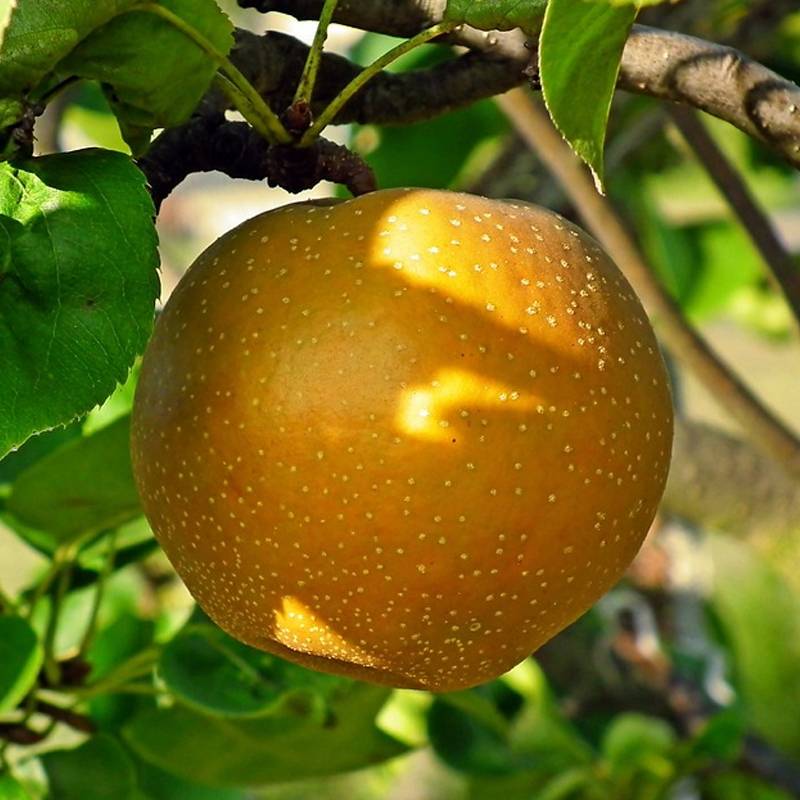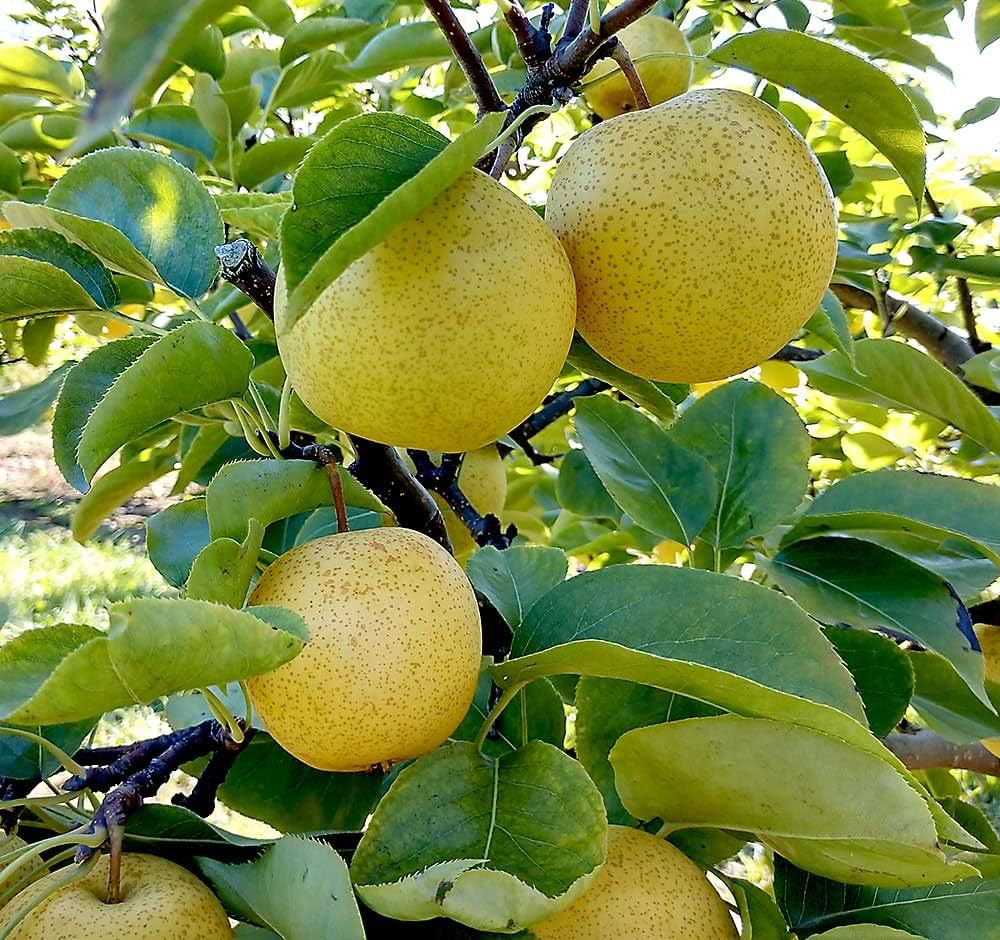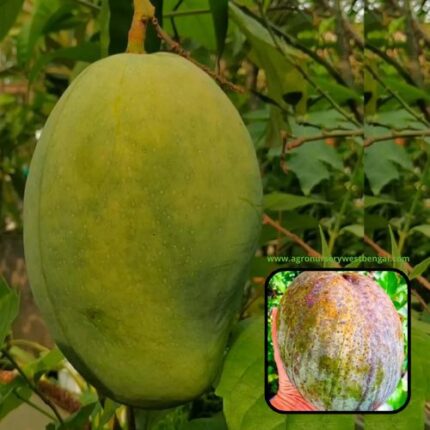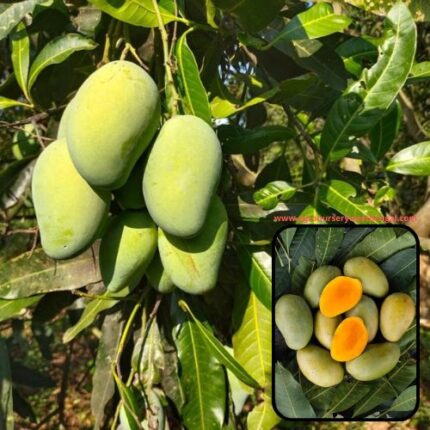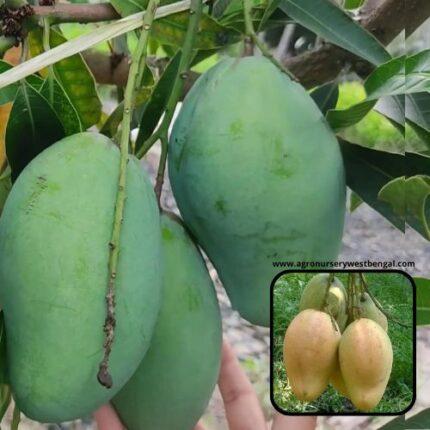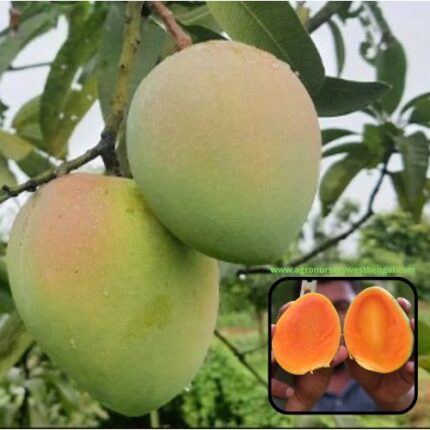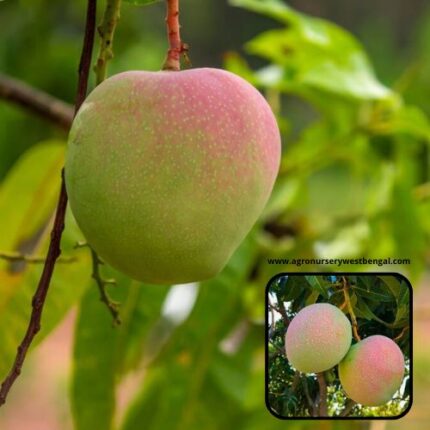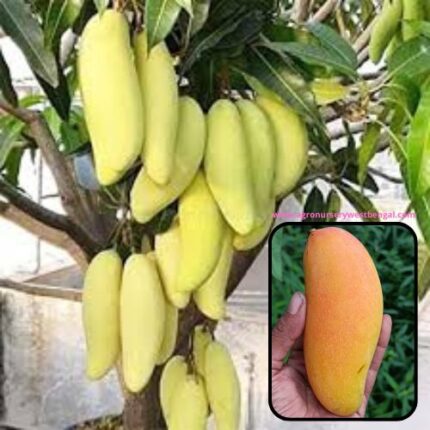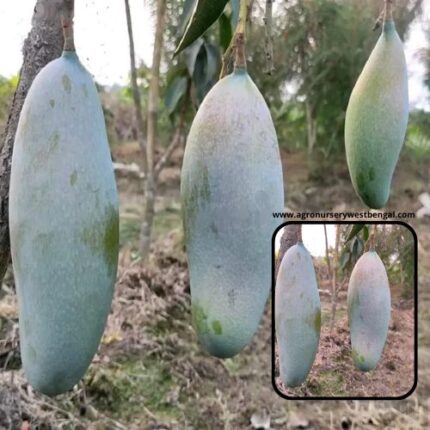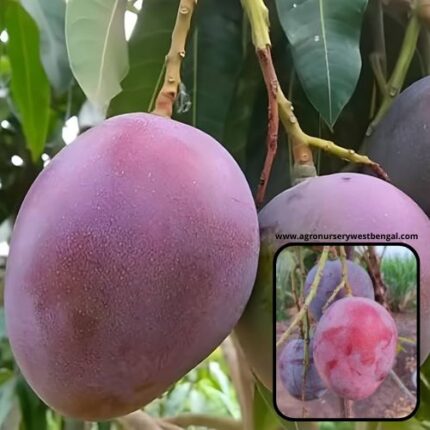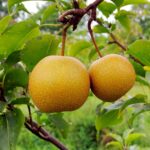
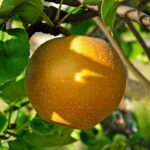
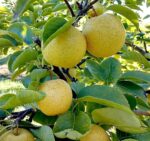
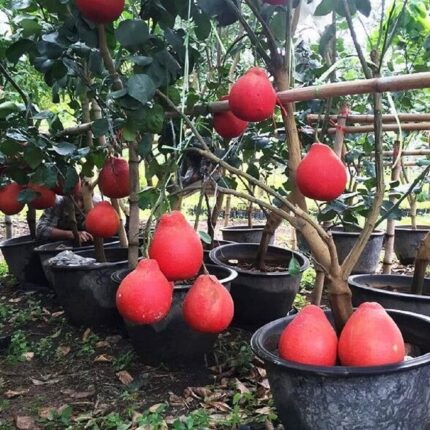
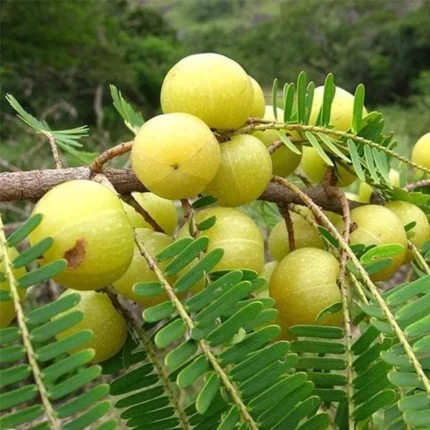
Nashpati fruit plants
₹899 Original price was: ₹899.₹499Current price is: ₹499.
“Nashpati” is the widely used Hindi term for Pear, a common and beloved fruit. Pears belong to the genus Pyrus in the Rosaceae family, making them relatives of apples. There are thousands of pear varieties cultivated worldwide, each with slightly different characteristics, but they all share the fundamental “pear” qualities.
Here’s a detailed description of Nashpati (Pear) fruit:
1. Botanical Classification:
- Scientific Name: Pyrus communis (for common European pears), Pyrus pyrifolia (for Asian pears, often called Nashi pears), and various other Pyrus species and hybrids.
- Family: Rosaceae (Rose family).
2. The Plant (Tree):
- Appearance: Nashpati trees are medium-sized, deciduous trees, typically growing up to 13 meters (43 feet) tall. They have a broad head and can be quite long-lived (50-75 years).
- Leaves: The leaves are usually roundish to oval, sometimes slightly wedge-shaped at their bases, and appear around the same time as the flowers.
- Flowers: Pear flowers are typically white, though some varieties may have a pinkish or yellowish tint. They have five petals and are quite attractive, blooming in spring.
3. The Fruit (Nashpati):
- Appearance:
- Shape: Most commonly recognized for its classic “pear shape” or pyriform – narrow at the stem end and broadening significantly towards the blossom end. However, some varieties (like many Asian pears) are more round, resembling an apple.
- Skin: The skin is thin and delicate. Its color varies widely by variety and ripeness, including green, yellow, reddish-brown, or a combination of these colors, often with a blush of red or russeting. Many varieties have small, prominent dots (lenticels) on their skin.
- Flesh (Pulp): The flesh is the edible part, and its characteristics define much of the pear’s appeal:
- Texture: Can range from very juicy, soft, and melting (like a ripe European pear) to crisp and crunchy (like an Asian pear, sometimes described as having a slight “grittiness” due to “stone cells” or sclereids).
- Color: Typically white or creamy white, sometimes slightly yellowish.
- Core & Seeds: Contains a central core with several small, dark brown or black seeds, which are usually inedible.
- Taste and Flavor Profile:
- Sweetness: Pears are generally sweet, often with a honey-like quality. The sweetness intensifies as the fruit ripens.
- Juiciness: Most varieties are very juicy, especially when perfectly ripe.
- Flavor Notes: The flavor can be complex, often described as mild, aromatic, and sometimes with subtle floral or musky undertones. The specific notes vary significantly between varieties (e.g., ‘Bartlett’ is sweet and buttery, ‘Bosc’ is firmer with a spicier sweetness, Asian pears are crisp and subtly sweet).
- Aroma: A ripe Nashpati emits a pleasant, sweet, and characteristic pear aroma.
4. Ripeness:
- Pears are unique because they are climacteric fruits, meaning they continue to ripen after being picked. Many varieties are actually best picked when mature but still firm, then ripened off the tree at room temperature.
- Indicators of Ripeness: A ripe pear should:
- Yield to gentle pressure around the stem end.
- Emit a fragrant aroma.
- For some varieties, the skin color may change (e.g., ‘Bartlett’ turns from green to yellow).
- Overripe: If a pear becomes too soft or mushy, it’s overripe, and the flesh may turn brownish and lose its desirable texture.
5. Varieties in India (Nashpati): In India, particularly in states like Himachal Pradesh, Jammu & Kashmir, Uttar Pradesh, and Uttarakhand, several pear varieties are grown. The term “Nashpati” often refers to the harder, more traditional Indian pear varieties, while “Babugosha” might refer to softer, more succulent types. Popular varieties include:
- Patharnakh: Known for its hard, crisp texture and good keeping quality.
- Punjab Nakh: Another hard variety.
- Gola Pear: A rounder, often harder variety.
- Baggugosha (Babugosha): Often considered a semi-soft to soft variety with a sweeter, creamier flesh.
6. Culinary Uses:
- Fresh Eating: Primarily enjoyed fresh as a snack, often eaten with the skin on as many nutrients are concentrated just beneath it.
- Salads: Sliced into fruit salads or savory salads (ee.g., with blue cheese and walnuts).
- Desserts: Excellent in pies, tarts, crumbles, baked pears, compotes, and custards.
- Preserves: Used to make jams, jellies, and chutneys.
- Beverages: Can be juiced or blended into smoothies.
- Savory Pairings: Pairs well with cheeses, nuts, and meats, providing a sweet counterpoint.
7. Nutritional Value and Health Benefits: Nashpati (Pear) is a highly nutritious fruit:
- High in Fiber: Especially rich in dietary fiber (both soluble and insoluble), which is crucial for digestive health, preventing constipation, and aiding in satiety.
- Rich in Antioxidants: Contains various antioxidants, including Vitamin C, Vitamin K, and numerous phenolic compounds (flavonoids), which help combat oxidative stress and inflammation. The skin is particularly rich in these compounds.
- Good Source of Vitamin C: Boosts the immune system.
- Contains Potassium: Important for maintaining healthy blood pressure and fluid balance.
- Other Nutrients: Provides smaller amounts of other vitamins (like B vitamins, Folate) and minerals (like copper, magnesium, manganese).
- Low in Calories: A relatively low-calorie fruit, making it a healthy snack option.
- Hydrating: High water content contributes to hydration.
- Blood Sugar Management: Its high fiber content and relatively low glycemic index can help in regulating blood sugar levels.
In essence, Nashpati (Pear) is a versatile and delicious fruit, cherished for its juicy, sweet flavor, unique texture (ranging from meltingly soft to crisp), and impressive nutritional profile


